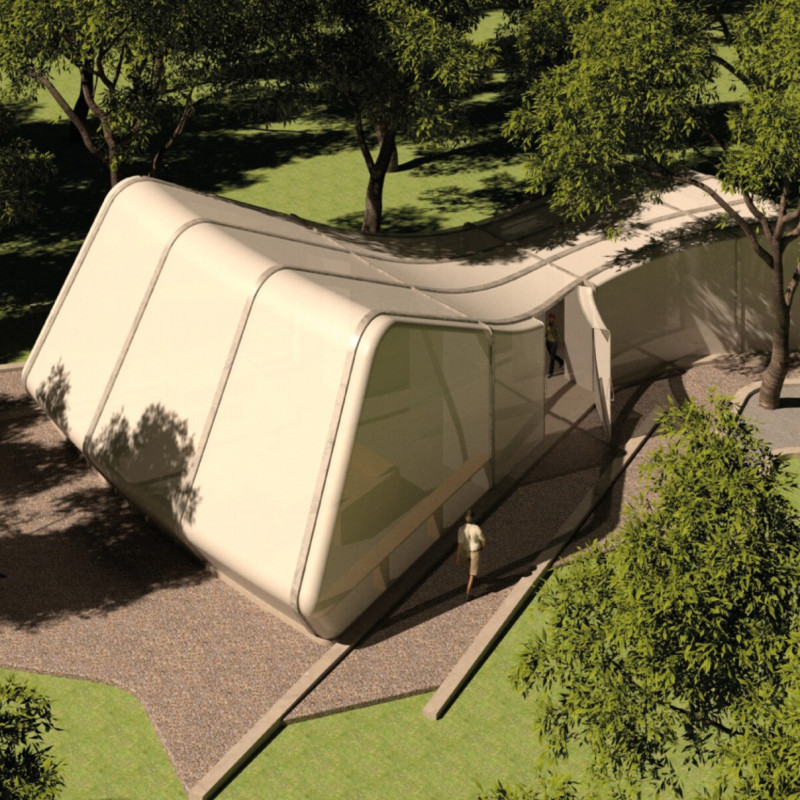5 key facts about this project
The project is characterized by its innovative use of materials and spatial organization. The exterior façade is primarily constructed from a combination of glass and locally sourced stone, creating a visual dialogue between the building and its surroundings. The transparency of the glass invites natural light into the interior while establishing a connection with the outside environment, promoting an open and airy atmosphere. The stone, on the other hand, grounds the project, providing a sense of permanence and stability amid the dynamic urban landscape. This duality of materials reflects the project's commitment to sustainability and contextual relevance, incorporating locally sourced materials that echo the region's architectural vernacular.
Internally, the project features a variety of spaces designed for flexibility and adaptability. Open floor plans facilitate collaborative work environments, while private areas are strategically placed for quiet and focused activities. The layout is carefully curated to promote interaction among users, with communal spaces like lounges and multipurpose rooms encouraging social engagement. An emphasis on accessibility is evident throughout, with pathways designed to accommodate all users, ensuring that the project is inclusive.
Unique design approaches are evident in various elements throughout the building. The use of green roofs and vertical gardens not only enhances the aesthetic appeal but also contributes to environmental sustainability, providing insulation and reducing the urban heat island effect. These biophilic design elements promote well-being among occupants, reinforcing the connection between nature and architecture. Furthermore, the integration of smart technology elevates the user experience, allowing for energy-efficient management systems that make the space more functional and responsive.
Lighting design plays a pivotal role in the overall ambiance of the project. Large, strategically placed windows maximize daylight while providing expansive views of the landscape. Interior lighting is carefully devised to maintain a balance between functionality and comfort, utilizing energy-efficient fixtures that emphasize warmth and clarity. The interplay of light and shadow enhances the spatial quality, drawing attention to architectural details and creating a dynamic environment that evolves throughout the day.
Landscaping complements the architectural design, creating inviting outdoor spaces that extend the building's usability. Thoughtfully designed pathways, seating areas, and garden spaces invite users to experience the outdoors, further enhancing the sense of community surrounding the project.
Overall, this architectural project stands out for its commitment to sustainability, user-centered design, and contextual sensitivity. The combination of innovative materials, thoughtful spatial organization, and the integration of nature underscores its relevance in today's architectural discourse. The project serves not only as a structure but also as a communal space that fosters interaction and engagement among its users. Interested readers are encouraged to explore the architectural plans, sections, designs, and underlying ideas to gain a more profound understanding of this remarkable project and its multifaceted approach to modern architectural practices.























